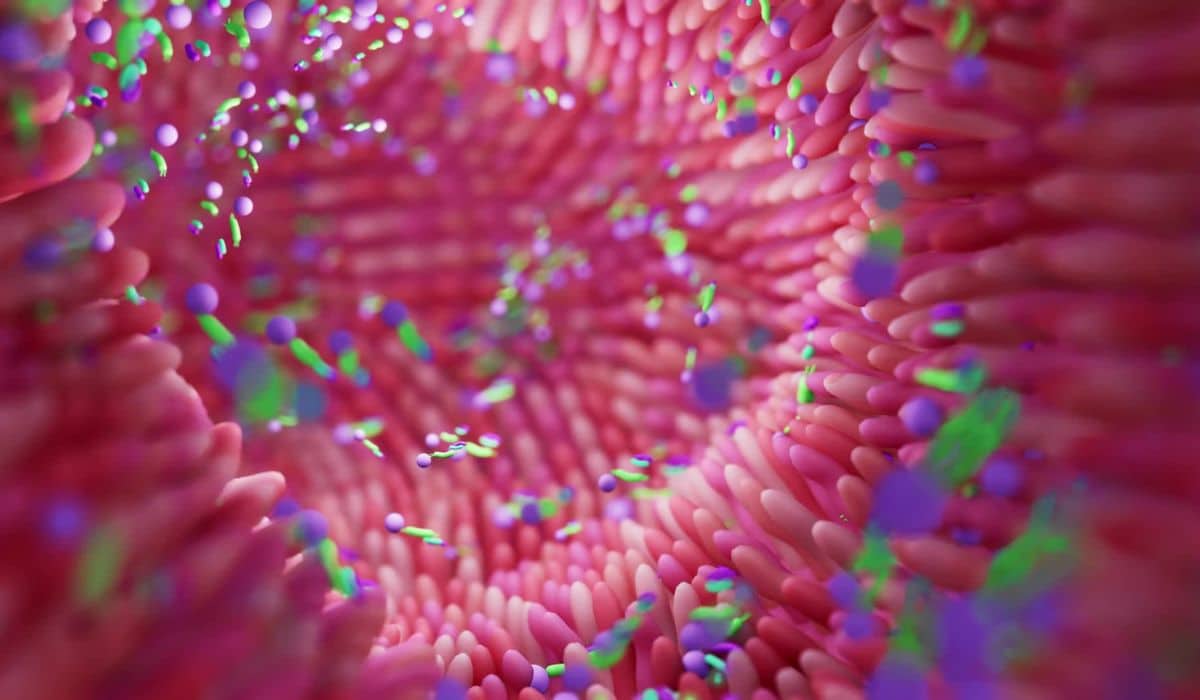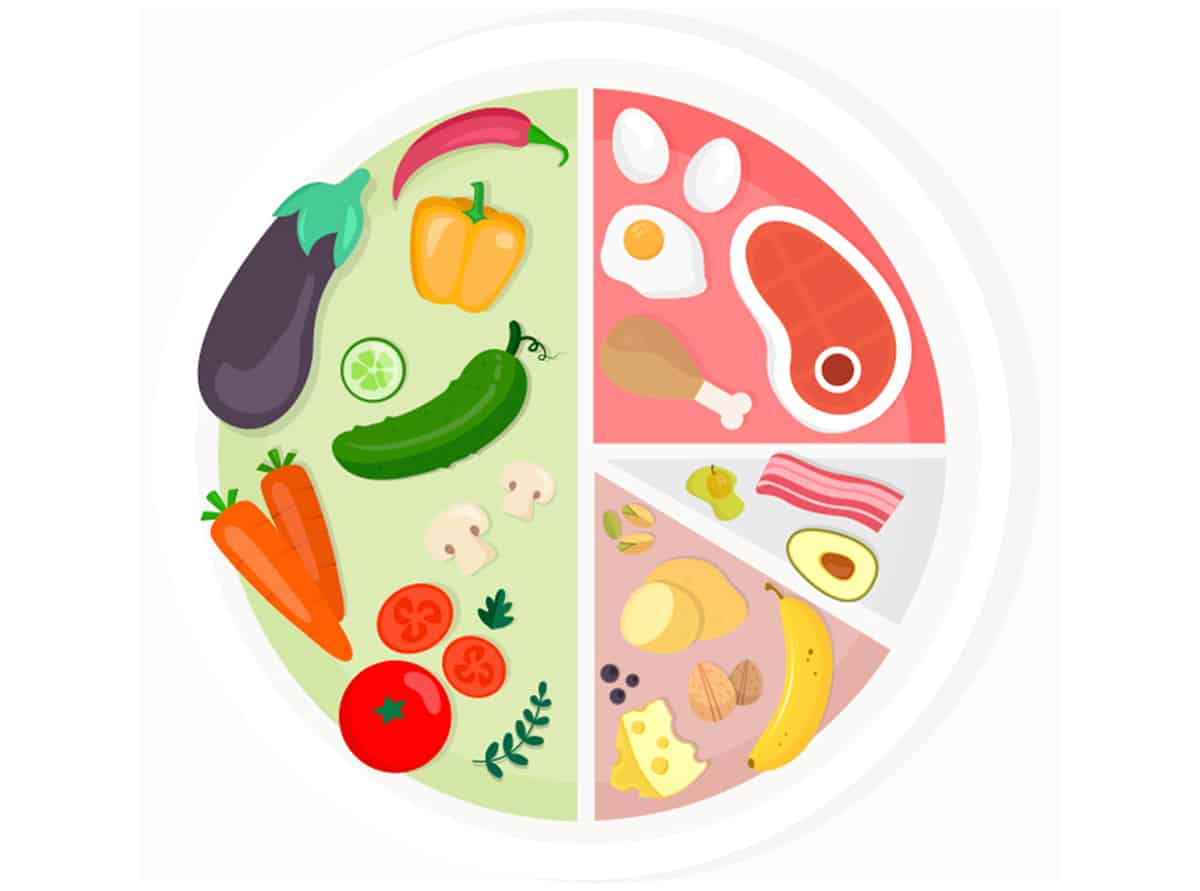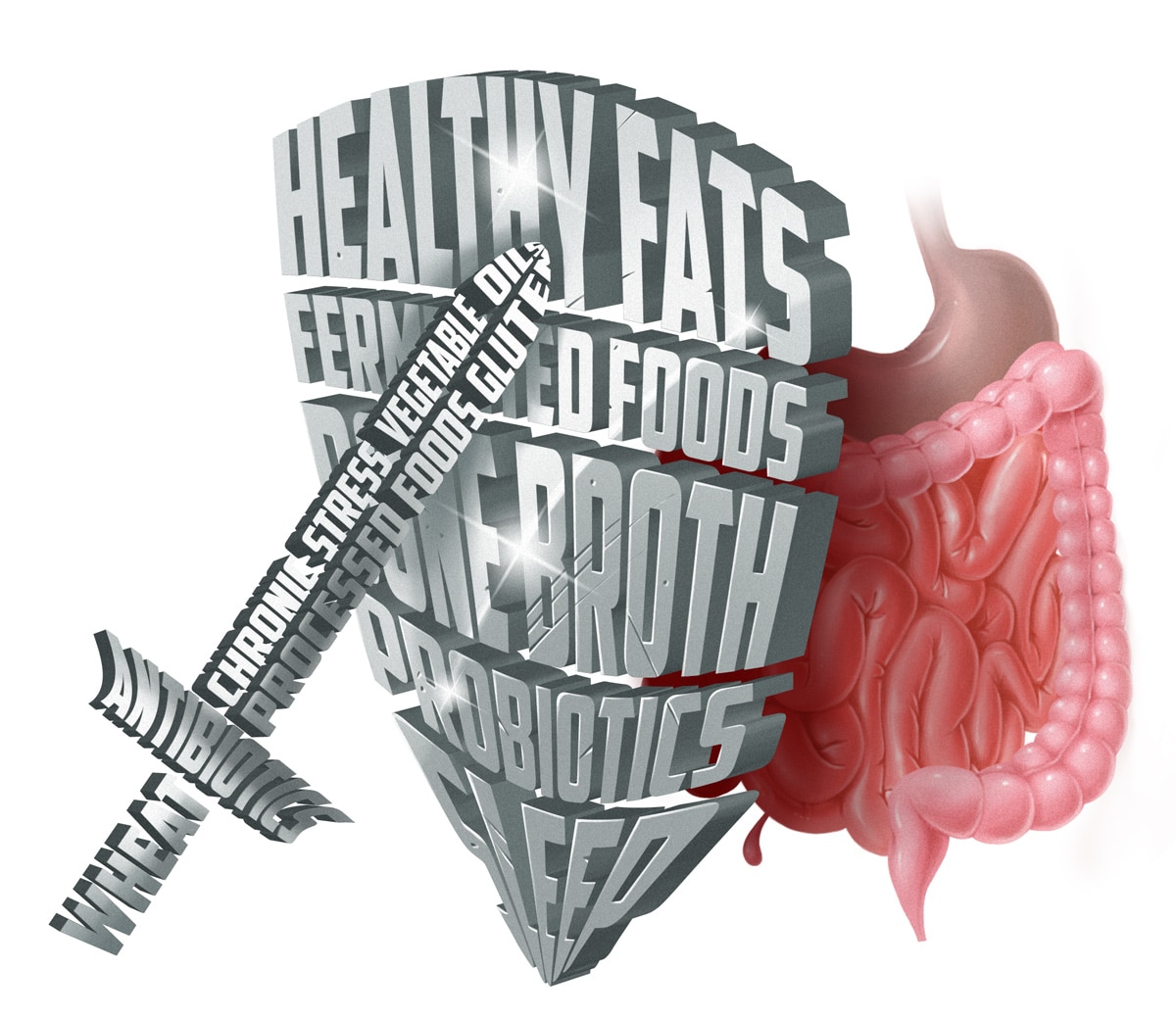
The gut microbiome - the collection of friendly bacteria that live in our intestines - is a huge factor in weight loss, heart health, immunity, and generally avoiding chronic disease. Gut bacteria might be tiny, but they’re definitely powerful, and it’s always good to keep them healthy and happy.
But what does that mean? What’s a “healthy” gut biome, anyway? It's not exactly like you can just take a quick peek down there and see if all your bacteria are bright-eyed and bushy-tailed.
From studies comparing the gut biomes of healthy and unhealthy people, it’s pretty clear that there’s no one perfect combination of bacterial species found in all healthy people. In fact, there’s a wide range of “normal” or “healthy” bacterial populations. For one thing, the bacteria in your gut adapt to your diet, and there’s a huge variety of healthy human diets. If you have a FODMAP sensitivity, the healthiest diet for you personally might be a low-FODMAP diet - but that diet will support a very different group of gut bacteria than a high-FODMAP diet.
But despite all the different findings, one common factor in different healthy gut biomes is species diversity. While there may be specific groups of bacteria that are particularly beneficial for certain people, species diversity is good for just about everyone, and it’s a simple way to get started improving your gut health.
A Healthy Gut Biome has Species Diversity
In general, several studies have shown that healthy people have a lot of different bacterial species in their gut, while sick people have a significantly reduced species diversity. Bacterial diversity is remarkably high among hunter-gatherer groups, who typically don’t suffer from the kinds of chronic diseases (diabetes, heart disease, fatty liver, kidney disease) so common in Western countries. On the other hand, bacterial diversity is reduced in people with…
- Excess body fat, insulin resistance, high blood cholesterol, and high levels of inflammation
- Chronic fatigue syndrome
- Asthma and allergic diseases
- Crohn’s disease and ulcerative colitis (Inflammatory Bowel Disease)
- Irritable bowel syndrome and loose stool or diarrhea more generally
- Type 1 diabetes
- PCOS
That's not a complete laundry list of modern chronic diseases, but it's not too far off, and it's definitely a representative sample.
What Makes Bacterial Diversity Good?
There are lots of reasons why bacterial diversity is beneficial, including…
Anti-Inflammatory Power
One big factor in obesity, diabetes, and metabolic syndrome is chronic, low-grade inflammation. Problems with the gut flora are one major source of inflammation, and healthy gut bacteria can protect against inflammation. For example, in this study, researchers found that the diversity of bifidobacteria (one type of bacteria that normally live in the gut) was significantly reduced in diabetic mice, causing inflammation. Restoring the healthy diversity of bifidobacteria reduced the inflammation.
Stable and Resilient Gut Function
Having all the right gut bacteria for your particular diet won’t help you if the population of bacteria in your gut is totally vulnerable to the first stressor that comes along. The bacterial population in the gut is constantly being challenged - just think of how many random foreign bacteria get in there from the food you eat. Having a lot of different bacterial species in the gut helps keep the gut biome stable in the face of these challenges, because all the different species in the gut compete with the invader for food.
Diverse bacterial populations also have functional redundancy, meaning that no one species is absolutely critical. So even if a few types of bacteria are really suffering for some reason, your gut as a whole will still be OK and your digestion will keep working.
Protection against foodborne and antibiotic-resistant infections
Competition between species also helps protect you from infection. Just like the good bugs, bacteria like E. coli and Salmonella have certain types of carbohydrates that they particularly like to eat. Normal bacterial diversity suppresses the availability of these carbohydrates in the gut. When there aren’t enough different types of bacteria in the gut, these carbohydrates are just hanging around like an all-you-can-eat buffet for E. coli.
Good bacterial diversity also makes it harder for antibiotic-resistant bacteria, to survive in the gut. And finally, there are some pathogens like C. difficile that are naturally found in the gut, but are totally harmless as long as other bacteria are around to compete with them for resources and keep their numbers down. When bacterial diversity is low and there’s no competition, these bacteria grow out of control and cause disease.
Reduction in cravings
This study even makes the case that bacterial competition can reduce food cravings and help regulate appetite. Basically, the authors start with the well-known fact that gut bacteria influence mood and appetite: they produce important hormones that regulate hunger, and they have a direct line to the brain via the vagus nerve. Then the study discusses the evidence that different species of bacteria affect hunger and satiety signals differently. When a large number of bacterial species are all competing with each other, no single species can dominate hunger and appetite signaling, so there’s a lower chance that a particular sugar-loving bacterial species will get you craving refined junk. (All of this does sound pretty ridiculous if you're reading it for the first time, but the study is completely free to read all the way through - take a look and see for yourself!)
Eating for Bacterial Diversity

Luckily, the gut bacteria are pretty responsive to diet changes. Different bacteria feed on different things, and whatever you feed, that’s what you’ll get more of. To name a particularly dramatic example, this study compared modern-day Italian subjects to Hadza hunter-gatherers. Unlike the Hadza, the Italians had bacteria specifically adapted to process the food preservatives that they ate.
That same study also touched on specifically what type of diet encourages overall bacterial diversity. The Italians had much lower bacterial diversity than the Hadza in general, and the authors cited several other comparative studies with similar findings. People in traditional societies who eat a wide variety of unprocessed foods typically have diverse gut bacteria. On the other hand, people who live in industrialized countries and eat mostly beige processed carbs soaked in vegetable oil have very low bacterial diversity.
That puts dietary variety as a top contender for establishing a healthy diversity of gut bacteria. As this review put it:
“Diet continues to be the most important determinant in shaping the composition, diversity and richness even throughout adulthood. In general, intake of diet rich in fruits, vegetables and fibers is associated with a higher richness and diversity of the gut microbiota.”
A high variety of dietary fruits and vegetables naturally provides you with a lot of different prebiotics (fibers that feed the gut bacteria). While you're at it, make some of those vegetables fermented to get the probiotic benefits of foods like kimchi and sauerkraut.
The Role of Exercise
Exercise is also associated with greater bacterial diversity. Interestingly, this study also looked at diet, and found that the athletes with such great species diversity also ate a diet much closer to Paleo: more meat, more fat, more saturated fat, more fruits and vegetables, and more fiber than the overweight controls. The authors specifically noted that animal protein was associated with higher diversity - so much for the “dangers” of eating meat!
PPIs and Antibiotics Spell Trouble for the Gut
In terms of things to avoid for gut bacterial diversity, two types of medicine stand out: proton pump inhibitors (PPIs) and antibiotics.
- PPIs are common drugs for heartburn, but as this study explains, PPIs reduce gut bacterial diversity. This actually prevents the normal “good bacteria” from fighting off dangerous bugs like C. difficile.
- Antibiotics reliably reduce bacterial diversity. Of course, there are times when they’re necessary, but they’re not a miraculous “get out of strep throat free” card - they do have a downside
Summing it Up

When it comes to a “healthy” gut biome, the best mixture of bacterial species will look different from person to person. But in general, species diversity is a good thing - it helps reduce inflammation, maintain your body’s natural defenses against foodborne infection, and prevent any one species from getting too dominant. That last benefit might even help reduce sugar cravings. Bacterial diversity is high in hunter-gatherer populations and lower in people with chronic diseases like diabetes, irritable bowel syndrome, and other gastrointestinal disorders.
A diet high in unprocessed foods, especially fruits and vegetables, is a good way to establish a healthy bacterial diversity - exercise also helps, and without knocking the ability of antibiotics to save lives, they’re not the greatest for a healthy gut. If you have to take them, some research shows that it may be helpful to take prebiotics or probiotics at the same time to minimize the damage to your bacterial diversity.





Leave a Reply